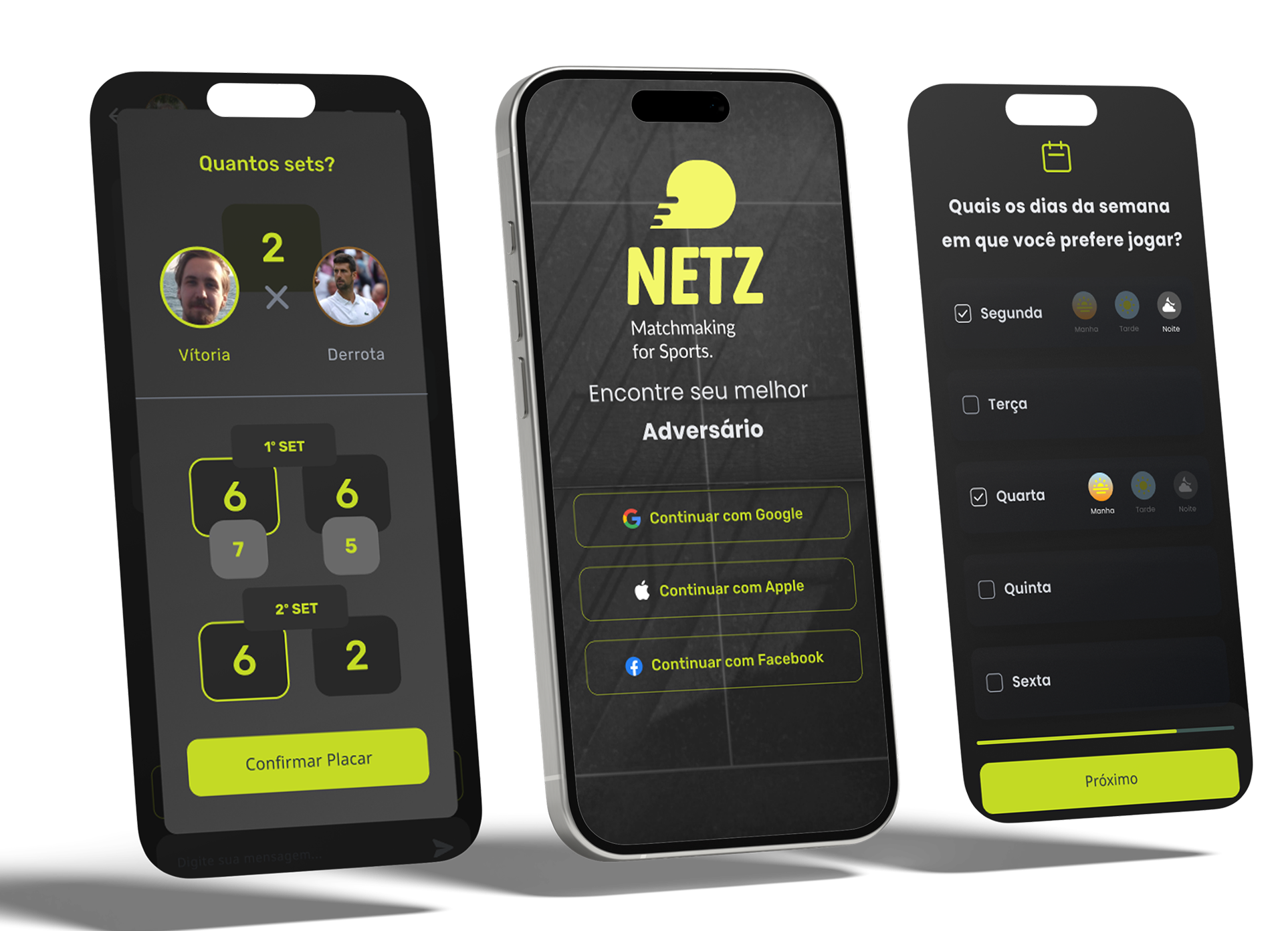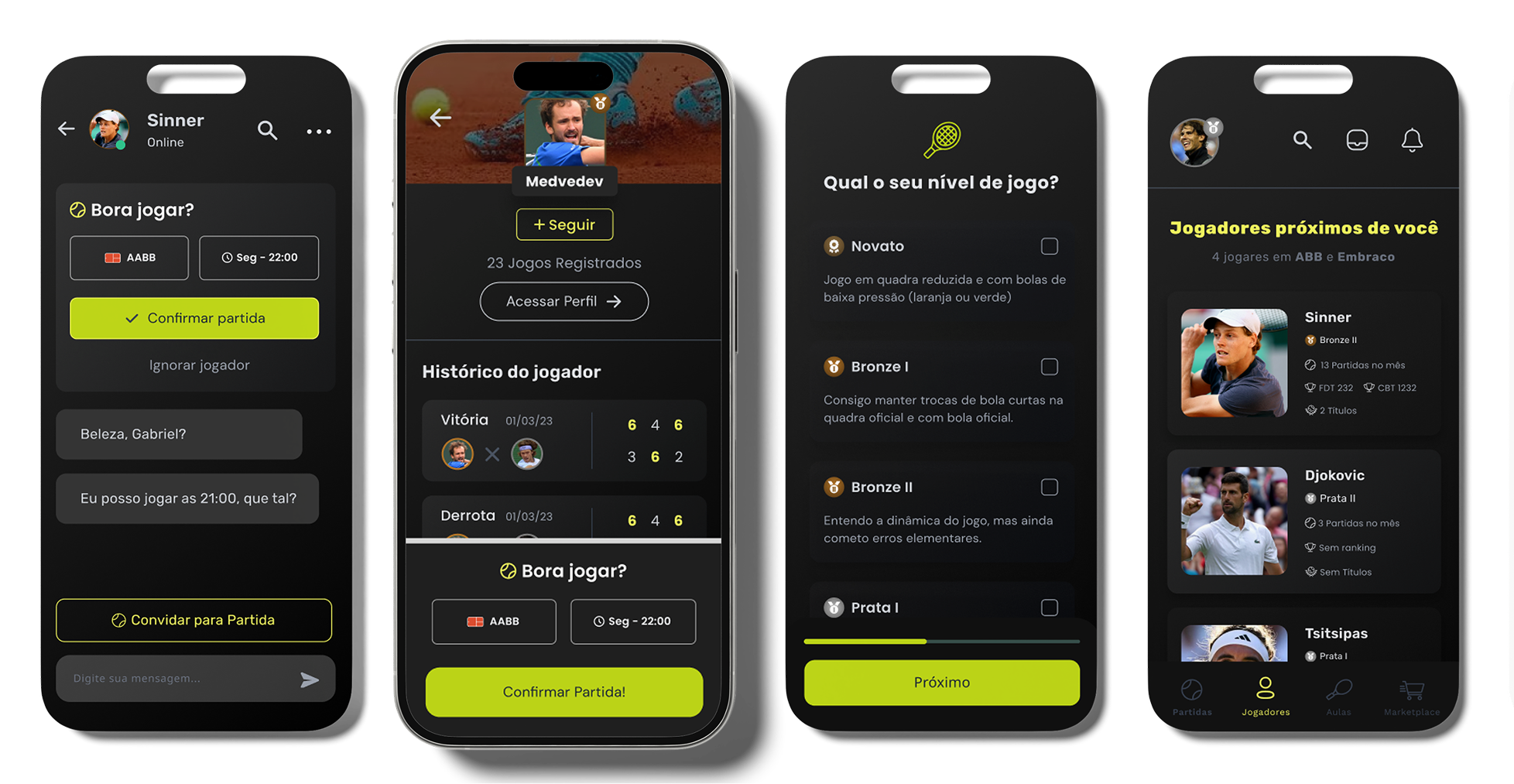NETZ
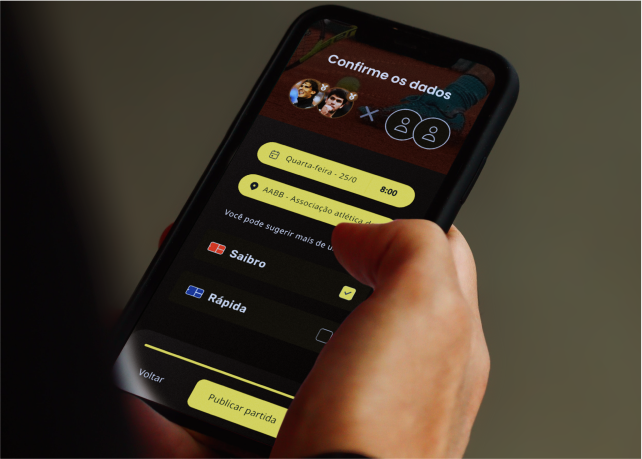
Discovery & Research
An Intimate Problem. Are There Solutions?
Netz was one of my favorite projects to work on — maybe because it involves my favorite sport, haha. The idea came from the frustrations our team faced when trying to find partners to play with. "There must be an app that solves this problem," we thought. To test this doubt, we started the project by conducting a competitor analysis to verify what problems existing apps solved and whether they actually worked.

Emerging Opportunities
To our surprise, no app seemed to solve the issue clearly. Finding partners was difficult and, when it worked, the opponent's skill level wasn't clear, which could make the match very unbalanced — either too easy or too difficult. We then began our research process by understanding the target audience and defining our personas. By better knowing the users, we were able to structure the app's touchpoints — which, by the way, were many.

Where to Focus?
Since we had already done a competitor analysis and had a good idea of what we wanted, we thought it wise to apply a SWOT matrix to evaluate the project situation. The opportunities proved excellent, especially due to the absence of strong competition. However, the threats raised important points — the main one being the doubt about how to handle player leveling.
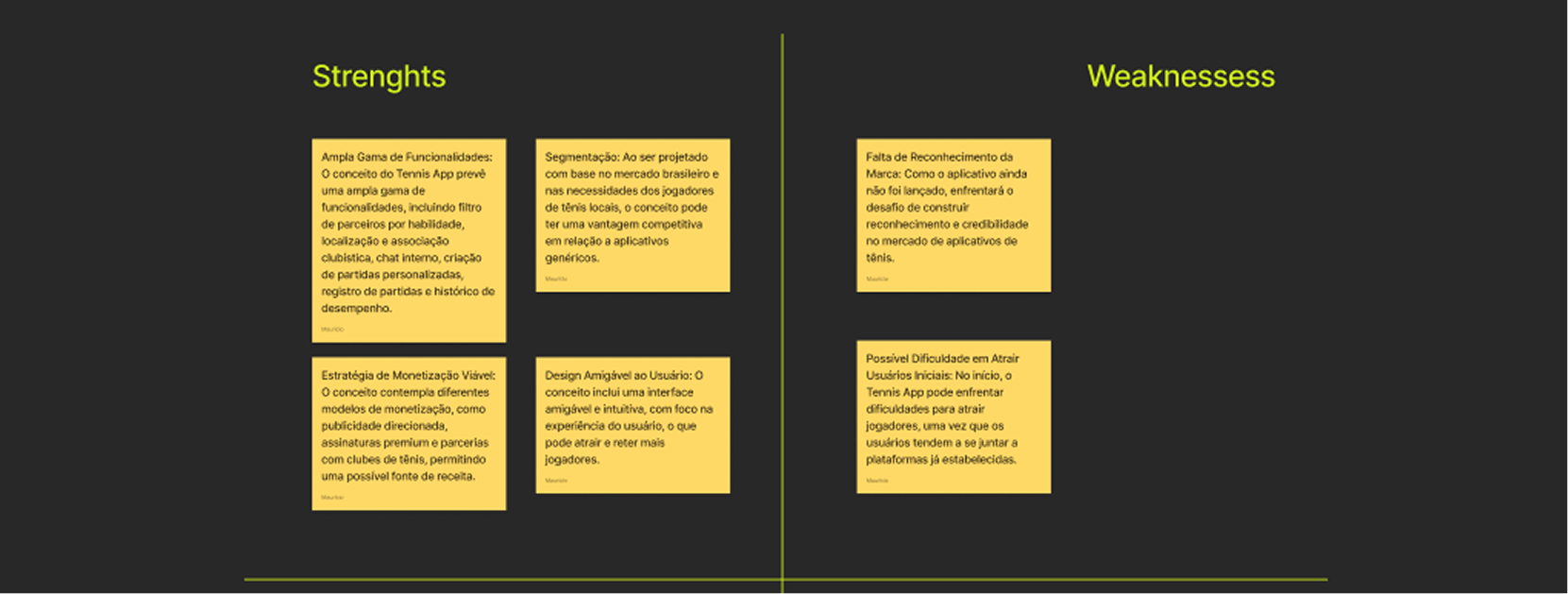
Interviewing Experts
To help with user flows and clarify some doubts identified in the weaknesses and threats, we decided to interview two tennis coaches. Through the interviews, we understood that it is indeed possible for a tennis player — even an amateur — to define their skill level, as this already happens in amateur tournaments and rankings.
Study Results
- • User onboarding should be responsible for interpreting their skill level;
- • The user profile needs to be the most important item in the app;
- • We should have tools or mechanisms that validate the opponent's level;
- • Location should be the most relevant filter;
- • Security mechanisms are needed when creating accounts and profiles to protect users' routines and locations;
- • Game scheduling should be facilitated, without depending on prior conversation.
Ideation & Development
Mapping Possible Paths
To transform these discoveries into flows within the app, we used the user flow tool, mapping all possible paths users could follow — before moving to prototypes. With research insights, the created moodboard, structured flows, and main doubts resolved, we felt confident to start building wireframes, visualizing the points that research had revealed.
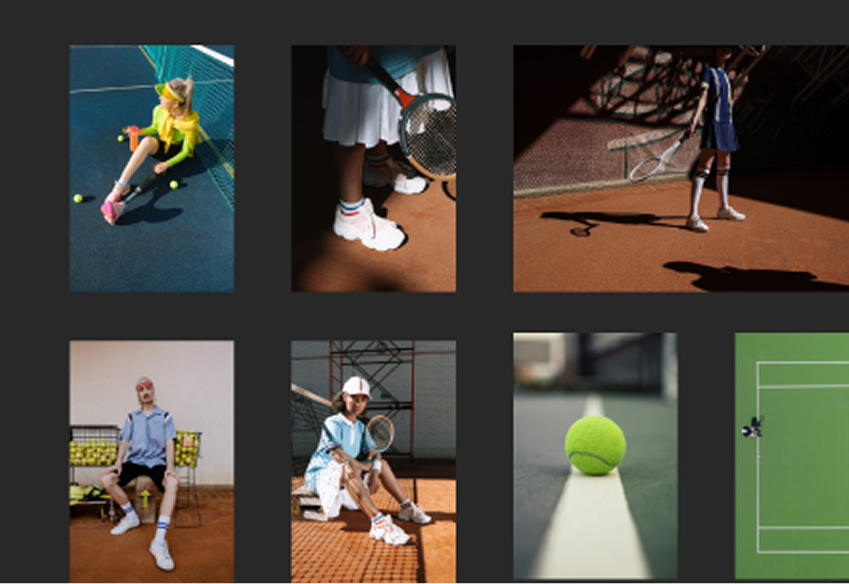

Wireframes, Visual Materialization

To transform these discoveries into flows within the app, we used the user flow tool, mapping all possible paths users could follow — before moving to prototypes. With research insights, the created moodboard, structured flows, and main doubts resolved, we felt confident to start building wireframes, visualizing the points that research had revealed.
Validating the Solution with Users
After some validation rounds, we proceeded to high-fidelity prototyping and then tested the solution. The test brought an important change: how match results were filled in. We were using a vertical format, which didn't correspond to the traditional tennis score display pattern. We made the adjustment based on this feedback.
A Platform for Tennis Players
In the end, we developed an app focused on easily identifying the user's tennis skill level, allowing them to find partners playing near their location — with various filters available. It's also possible to view the opponent's match history to have confidence in their skill level and, if necessary, contact them.
THE PRODUCT
